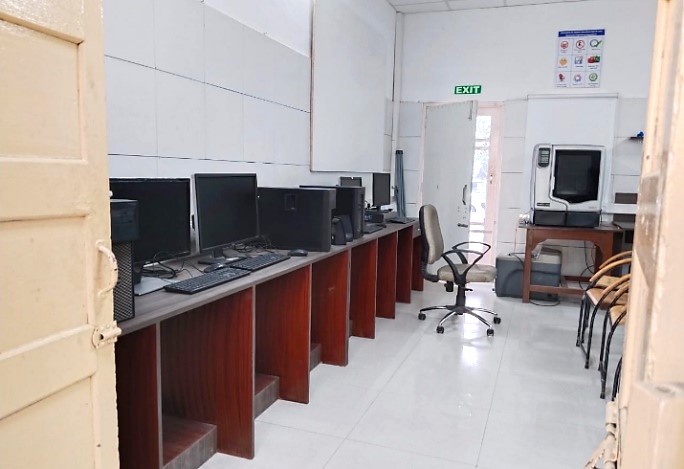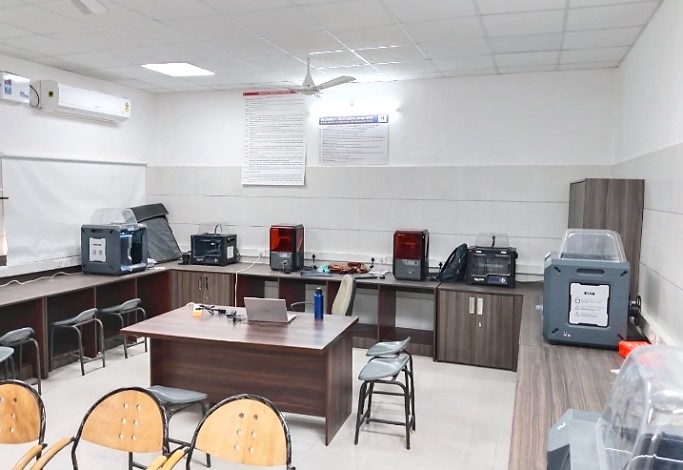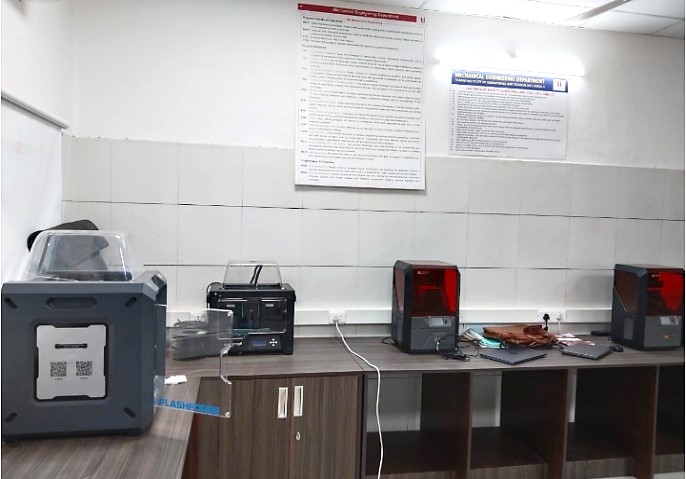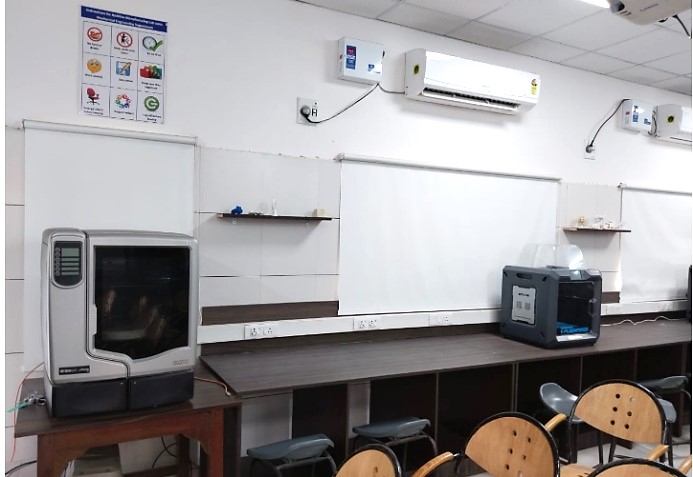



STAFF:
List of Machinery:
|
Make |
Flash forge/04 |
|
Model |
Guider IIs 3D Printer |
|
Title of the related experiment: |
1. To determine linear shrinkage along the length, width and height of PLA/ABS-developed parts. 2. To study the effects of part deposition orientation and hatching orientation on the linear shrinkage of PLA/ABS-developed parts. 3. To determine the surface roughness and edge profiles of PLA/ ABS developed parts. 4. To study the volumetric shrinkage for PLA/ABS-developed prototypes. 5. Manufacturing of a fully functional assembly project to realize the application of AM technology for product development. |
|
A brief explanation of the usage of the said equipment |
The machine is utilized for developing test samples and functional prototypes of PLA, ABS, PC, Nylon, Poly Methyl Meta Acrylate etc. The students learn to operate the machines and develop their prototypes after undergoing experiments which expose them to different problem areas related to plastic manufacturing like shrinkage, surface roughness, edge profiles, part deposition orientation and slicing of CAD models. They are also exposed to the effects of different process parameters like layer thickness, hatching patterns, nozzle temperature, part bed temperature, raster angle etc. on the developed part. With this setup, students should be able to comprehend the effect of different process parameters on: · The linear shrinkage of part. · How the surface roughness and edge profiles are affected by the part deposition orientation and slicing. · Volumetric shrinkage and its relation to different process parameters. |
|
Make |
Flash forge/02 |
|
Model |
Hunter DLP Printer |
|
Title of the related experiment: |
1. To determine linear shrinkage along the length, width and height of liquid resin-developed parts. 2. To study the effects of part deposition orientation and hatching orientation on the linear shrinkage of liquid resin-developed parts. 3. To determine the surface roughness and edge profiles of liquid resin-developed parts. 4. To study the volumetric shrinkage for liquid resin developed prototypes. |
|
A brief explanation of the usage of the said equipment |
The machine is utilized for developing test samples and functional prototypes of liquid photosensitive resin. The students learn to operate the machines and develop their prototypes after undergoing experiments which expose them to different problem areas related to plastic manufacturing like shrinkage, surface roughness, edge profiles, part deposition orientation and slicing of CAD models. They are also exposed to the effects of different process parameters like layer thickness, in-fill percentage, exposure time etc. on the developed part. With this setup, students should be able to comprehend the effect of different process parameters on: · The linear shrinkage of part. · How the surface roughness and edge profiles are affected by the part deposition orientation and slicing. · Volumetric shrinkage and its relation to different process parameters. Solid material made prototype vs liquid material made prototype. |
|
Make / No. of Machines |
Stratasys/01 |
|
Model |
U Print Stratasys 3 D Printer |
|
Title of the related experiment: |
|
|
Brief explanation on usage of the said equipment |
The machine is utilized for developing test samples and functional prototypes of ABS only. The students learn to operate the machines and develop their prototypes after undergoing experiments which exposes them to the variations of the same materials but of different grades and make. With this set-up, students should be able to comprehend the effect of different process parameters on:
|